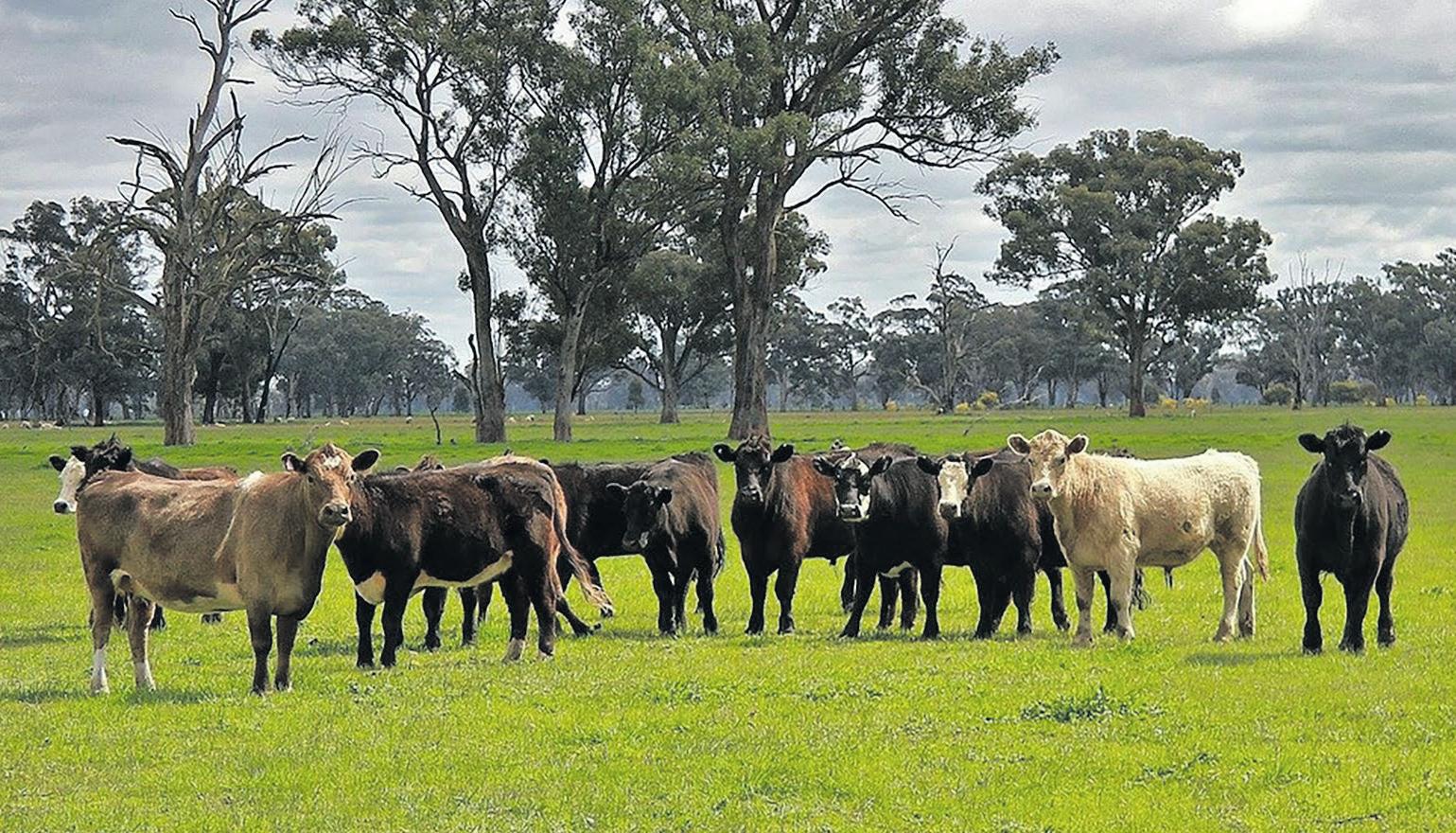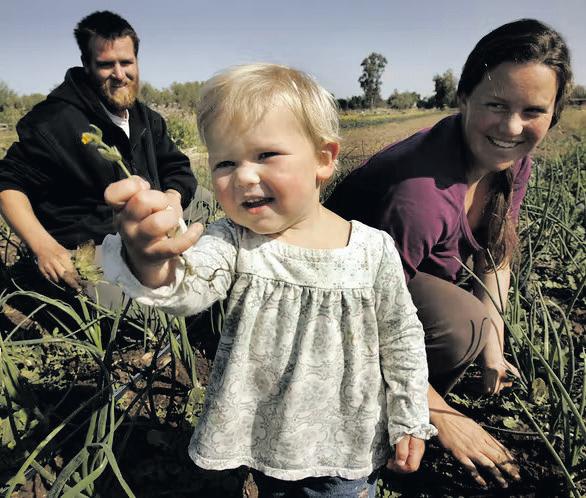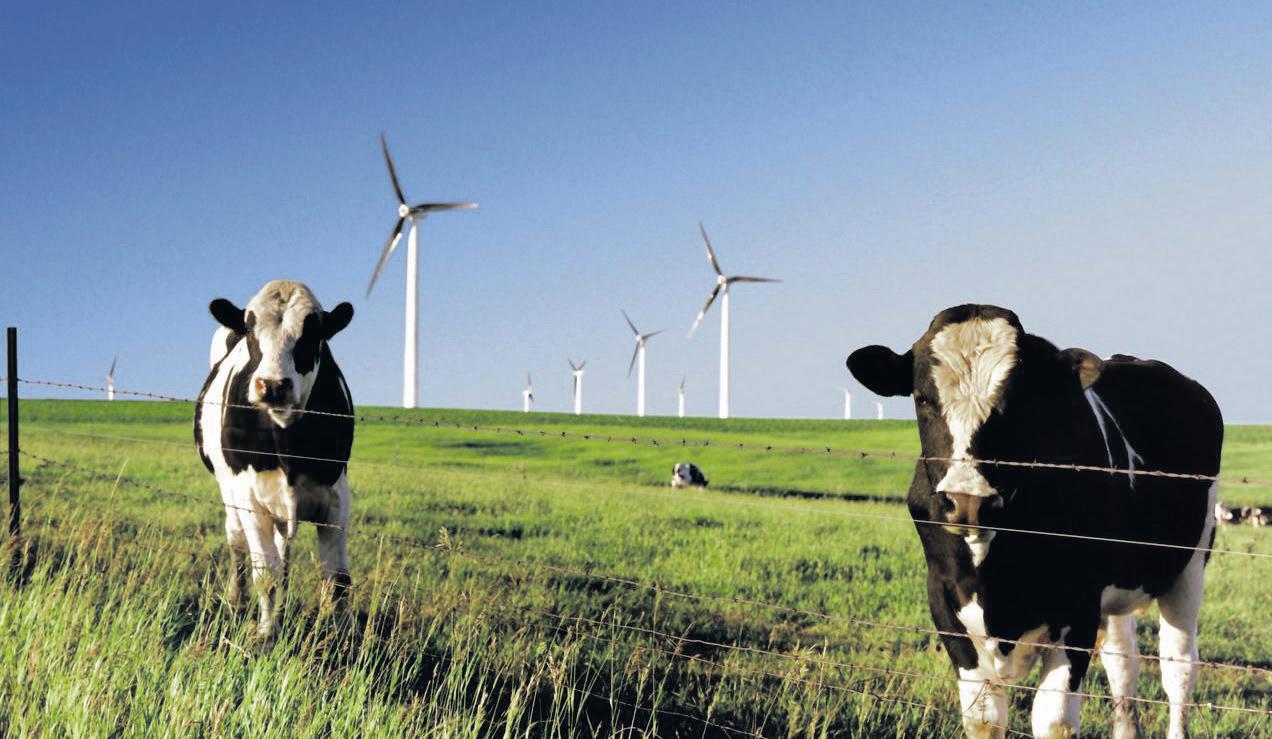
15 minute read
Rural
Recent Cattle Market Reports
GRAFTON
There were 1057 x 57 head yarded at Grafton Fat & Store Cattle Sale 15th March 2022.
Grafton’s Combined Fat & Store Sale saw a good representation of both heavy export cattle and restocker types of all descriptions. Bullocks & though not all processors operated. Feeder & Weaner Steers sold very strong for the good quality types, while the heavier end of the Weaner Heifers sold cheaper. The lessor quality types also sold cheaper absent due to the wet weather. Cows & Calves and
Sale Highlights include: CASINO
Agents yarded a total of 1,184 head at the Northern Rivers Livestock Exchange regular prime sale on Wednesday 16 March. The yarding consisted of a good supply of young cattle and a fair penning of cows. Young cattle on offer consisted mainly of vealers and weaners, with a small number of yearlings offered. Quality was mixed with several pens of well bred steers and heifers throughout the sale, however there was increased numbers of cross bred cattle offered.
Cow prices saw another drop this week averaging 340.0c/kg and reaching a top price of 432.2c/kg. lighter heifers up to 250kg averaging 685.2c/kg and topping their category at 842.2c/kg. Heavier heifers over 250kg averaged 554.1c/kg and reached a top of 686.2c/kg. a top of 400.2c/kg and average of 348.4c/kg and 667kg. This week saw lighter steer prices fall while heavier steers saw an increase. Those weighing up to 250kg saw an average of 716.9c/kg and top price of 878.2c/kg. Heavier steers over 250kg averaged 631.4c/kg and topped their market at 764.2c/kg. A large number of bullocks sold on the day averaged 420.2c/kg.
Vealer prices were also easier this week with lighter vealer up to 250kg averaged 686.4c/kg and reaching a top of 850.0c/kg. Heavier vealer over 250kg averaged 619.9c/kg with a top price of 722.2c/kg.
T&W McCormack and Ramsey & Bulmer held a joint store sale on Monday 14 March with 1,379 head sold on the day. Steers topped their category at 992.2c/kg and averaged 652.8c/kg and 310kg. Heifers reached a top of 846.2c/kg and averaged 714.1c/kg and 228kg. Cows saw a top of $2,900 per head whilst cows and calves topped their market at $4,400.
Ray White Rural held a two day weaner and breeder sale on Friday 18 and Saturday 19 March with a large crowd in attendance on both days. Friday’s sale saw 3,141 weaners go under the hammer with steers topped their category at 915.2c/kg and averaging 708.6c/kg and 266kg. Heifers reached a top of 842.2c/kg and averaged 685.6c/kg and 250kg. Saturday’s breeder sale saw 657 head sold with PTIC heifers reaching a top price of $4,120. Cows topped their market at $2,840 whilst cows and calves saw a top of $3,780.
This week will see George & Fuhrmann hold the second and third day of their annual weaner sales on Thursday 24 and Friday 25 March with over 6,000 head expected to go under the hammer over both days. Further bookings are welcome.
A/c L & Muller sold Angus Bullocks 429.2c/kg averaged 785kg - $3,369.22 p/hd
A/c Morgan Family Trust sold Brangus Bullocks 430c/kg averaged 682.5kg - $2,934.75 p/hd
A/c VM Jefferies sold Charolais/Hereford Bullocks 426.2c/kg averaged 644.2kg - $2,745.44 p/hd
A/c Jesse Brotherson sold Brangus Cross Bullocks 430.2c/kg averaged 616kg - $2,650.03 p/hd
A/c I & S Connor sold Charbray Cows 390.2c/kg averaged 583.3kg - $2,276.17 p/hd
A/c CO Austen & Sons sold Angus Steers 712.2c/ kg averaged 334.7kg - $2,383.64 p/hd
A/c BJ Slarke Pty Ltd sold Angus Steers 754.2c/kg averaged 273.8kg - $2,064.62 p/hd
A/c D Corfe sold Angus Steers 770.2c/kg averaged 265kg - $2,041.03 p/hd
A/c Bien Vida Pty Ltd sold Angus Heifers 638.2c/ kg averaged 281.9kg - $1,798.93 p/hd
A/c KSJ Davis sold Charolais Cross Steers 808.2 c/ kg averaged 209.4kg - $1,692.17 p/hd
A/c D Carlton sold Charolias/Limousin Cows & Calves - $3,475.00 p/unit
A/c WJ Bultitude sold PTIC Angus Cows - $1,940.00 p/hd
Brought to you by Donovan Livestock & Property
Brought to you by NRLX

Annual Blue Ribbon Feature Female Sale
Grafton Selling Complex Saturday 9th April starting at 11am

85 Fitzroy Street (PO Box 417) GRAFTON NSW 2460 Phone: (02) 6642 5200 Email: office@farrellmccrohon.com.au
DONATED FODDER CAN POSE BIOSECURITY RISK
entering the state from across Australia following the recent
Agriculture and Animal has been catastrophic, biosecurity threats do not feed and fodder donations, wanted pests and weeds onto onto properties, farmers are tating pests and weeds such parthenium weed neither of
These pests are Prohibited Queensland is considered a high risk for bringing these alongside farmers dealing ensure farmers don’t face greater biosecurity risks as a the Agriculture and Animal use local and trusted rural suppliers to source thanks to good seasonal conditions, fodder is in we will continue to ensure anyone who needs access to
“More than 2000 tonnes air and on the ground, to
Landholders can continue tacting the Agricultural and
Once registered for fodder assistance the operations team will allocate a supply and as soon as that supply contact you to schedule your
High commodity prices help sustain encourage high levels of rural investment
Australia’s farmers are forecasting a third straight year of strong commodity prices and intending to spend up big this year, but are wary of the rising cost of key inputs, according to the latest Rabobank Rural
Results from the high prices across key agricultural sectors farm sector business continuing to sit at high easing slightly since late term impact of the along Australia’s east coast – particularly in southern Queensland and not factored into these completed prior to the which, it is expected, production and income last month, found 31 per cent of farmers expect agribusiness conditions down slightly on the 35 a continuation of business conditions, while the number expecting a deterioration was 14 per cent (compared with 13 per and canegrowers were found to be the most
Rabobank Australia CEO Peter Knoblanche the past three years had put the nation’s farmers seasonal conditions and natural disasters in some
“Australian farm businesses are optimistic about the underpinning
“Low interest rates and continued strength in our markets are helping farmers create opportunities for growth and expansion
Mr Knoblanche said the regions in southern Queensland northern had been some of the most optimistic in the full extent of the damage to agriculture was still major impacts on many agricultural producers in these regions,” he herd losses and damage losses among cattle farmers as well as crop damage in sectors such as horticulture, sugar agricultural freight and logistics networks were may remain impacted full extent of the damage is still not yet known and, for many in these regions, it may take a number of seasons to
For the country more prices ‘as king’, with 83 per cent of those prospects in the coming year citing prices as the conditions were also a major contributor to the farmers predicting a deterioration in business conditions attributed
Mr Knoblanche said Rabobank analysts were closely monitoring the markets and supply of key agricultural inputs – particularly for urea and, to a lesser extent, potash – with any rise in input prices likely to weigh further on farmer
“The worst impacts of the geopolitical situation on food security – in – are sadly most likely to affect those in the poorest nations of the on the current production outlook, it is pleasing that Australia should be in a good position to contribute well in
Tasmania and Queensland farmers reported the highest country – marginally only states to record a were shown to be behind Tasmanian producers of optimism, with 40 per cent expecting agribusiness conditions ahead, while 51 per cent expect the currently good business settings to Queensland and per cent and 38 per business conditions in throughout summer moisture, ensuring excellent pasture growth and solid prospects for tempered optimism in most farmers are expecting farm business conditions to stay the state’s farmers also had the strongest appetite in the country to purchase half of producers now expecting conditions to state’s pastoral areas had buoyed beef producers, with water also making its way into the Lake good crop yields last Victorian producers, with dairy, beef and sheep producers all optimistic thanks to good water allocations and
SECTORS
to be the main concern for grain growers this farmers expecting conditions to worsen grain sector sentiment
Of the grain farmers outlook, more than three input costs, while almost half were worried about the prospect of falling grain growers expect their farm incomes to remain the same in the next 12 months, 28 per cent expect an income decline and 26 per cent continue to enjoy the magic combination of wet seasons and high prices, with 34 per cent tipping conditions to year ahead, and almost half of cattle farmers gross farm incomes to increase on last year’s prices underpin solid sentiment among sheep producers with almost expecting conditions to
Although dropping slightly since January, lamb prices had been setting new records for most of late 2021, uncertainty to reach in the sheep sector
Most dairy producers continuation of current good seasonal and market conditions, with an abundance of feed and water security helping to lock in
Prior to the extreme Queensland in the past fortnight, sugar producers were the most optimistic of all sectors, primarily due cent of canegrowers were expecting business
FARM BUSINESS PERFORMANCE AND INVESTMENT
Australian farmers expectations about their gross farm incomes although income expectations remained of farmers forecast their farm incomes to increase this year, while 42 per cent expect incomes to stay the same and 15 per per cent of the country’s farmers intend to their farm businesses spending, followed new machinery and priorities for those directed towards new
Mr Knoblanche said farmers were well placed to maximise opportunities which boost their businesses in turn, should help build resilience within the monitor of outlook and sentiment in Australian rural industries, the Rabobank Rural 1000 primary producers across a wide range of commodities and geographical areas throughout Australia on a robust study of its type has been conducted by an independent research organisation throughout the country The next results are scheduled for release in
CATTLE PRICES ACROSS MOST KEY BEEF-PRODUCING REGIONS AT THEIR HIGHEST LEVELS IN FIVE YEARS Cost increases to challenge global beef demand
Global beef markets remain tight on strong ongoing consumer demand and constrained supply, however headwinds are building, Rabobank says in a newlyreleased report.
In its Q1 Global Beef Quarterly, the specialist agribusiness bank says while global beef prices remain high – with cattle prices across most key beef-producing regions at their highest levels are building in the supply chain. And this will test the willingness of consumers to continue to pay ‘top dollar’ for beef.
“Over the past two years, retail beef prices have been phenomenal,” the report says, largely driven by strong consumer demand and some supply shocks.
“In Q4 2021, beef retail prices in the US were 23 per average and in China, they were 24 per cent above the
Consumer ‘demand pull’
Much of this increase in prices has been caused by “demand pull”, Rabobank senior animal protein analyst Angus GidleyBaird said, driven by increased consumer appetite for beef due to factors including lockdown restrictions, additional disposable incomes from Covid stimulus packages and (in the case of China and African swine fever in pork) limitations on the availability of alternative proteins.
“With beef supply unable to keep up, the increase in demand has created an imbalance in the market and, as a result, beef prices have lifted,” he said.
In many cases, Mr GidleyBaird said, the increases in retail beef prices have been among the largest in history. And, while beef prices continued to increase through 2021, prices for many other proteins remained stable or contracted.
“While price rises in beef have been dramatic, the fact they have been largely caused by consumer demand has meant they have been accommodated. That is, consumers have been willing to pay higher prices to continue consuming beef,” he said.
pressures are building in the beef supply chain, the report warns, with labour, freight and energy costs among the largest to see increases, along with feed.
A number of these cost increases will be permanent and need to be “accommodated” and passed on into retail pricing, Mr Gidley-Baird said.
“Some of the cost pressures – such as freight, energy and feed – are cyclical and over time are expected to decline, allowing for some easing in 2022. However, a number of cost increases – those associated with labour and sustainability for example – will be permanent and will need to be accommodated within the supply chain,” he said.
“Further increases in beef prices run the risk of consumers substituting other proteins or reducing their overall consumption. And we are starting to see signs they might be reaching their limit.”

Russia Ukraine
The Q1 report says the is not expected to have a major impact on global beef markets, given Russia has a less prominent role in markets ago. Russia only accounts cent of global beef imports with its major suppliers being Paraguay, Brazil and Argentina.
However, indirect impacts are possible.
fertiliser and feed costs as a result of the beef supply chain and, with Russia and Ukraine accounting for 29 per cent of global wheat exports, any trade embargoes could pressure feed prices,” Mr Gidley-Baird said.
“The general uncertainty – along with slower global also see an erosion of may result in an easing of consumer demand for beef.”
Australia
For Australia, the report says, “encouraging rains” across central, northern and eastern months of 2022 will support cattle production in the largest producing states.
“After a number of dry years in northern Australia, we expect these rains to stimulate restocking and herd rebuilding, adding further producer demand to an already strong cattle market,” Mr GidleyBaird said. “Such restocking will also support increased production in the years to come.”
Australian cattle prices remain strong, supported by ongoing producer demand for restocking, coupled with the limited availability of cattle, the report says.
Cattle processing has had a slow start for the year, with Omicron cases in the community impacting the labour force. 2022, east coast weekly cattle slaughter in Australia was nine per cent below the same period last year and 40 per cent below Gidley-Baird said.
Australian beef exports ended 2021 down 15 per cent on 2020 volumes, the report said. The largest declines were to the US (down 31 per cent), China (down 25 per cent) and Japan (down 13 per cent). Volumes lifted however to South Korea (up three per cent).
Live exports followed a similar trend – down 27 per cent overall, with volumes to Indonesia down 13 per cent and to Vietnam down 44 per cent.


NSW FARMERS WELCOMES RURAL HEALTH PUSH
NSW GOVERNMENT LEADING THE WAY WITH FARM RENEWABLE ENERGY REVIEW

The state’s peak agricultural body has welcomed a move to establish a dedicated NSW Department of Rural Health.
Independent state MP for Wagga Wagga Dr Joe McGirr launched a petition calling for the establishment of a Department of Rural Health in NSW on Tuesday. Sarah Thompson, a NSW Farmers member and retired occupational therapist, said country communities experienced a lower level of access to health services, and a dedicated Rural Health Department might address those problems.
“We know rural health is not something you can improve by simply throwing money at it, we need a commitment and focus to deliver the services that are needed,” Mrs Thompson said.
“As people increasingly look to the regions for affordable housing and better liveability, they will put more strain on already-stretched health infrastructure.
Mrs Thompson said it was pleasing to see a country doctor like the Member for Wagga Wagga call for a department that would be headed up by a former country nurse in Regional Health Minister Bronnie Taylor.
“Providing health services in rural and remote communities – be it as a GP or a nurse or an allied health professional – has a whole different set of challenges and we need people with that experience driving this forward,” she said.
“We recognise and appreciate the funding that has been invested in regional health, particularly to deliver important hospital infrastructure and equipment, but we need an equal focus on building the number of health professionals working within these facilities and provide services across the community.
“Ultimately, regional, rural and remote communities deserve excellent health care and that’s what we want to see achieved.” Regional communities and farmers are set to launch of a review sure we’re doing all we can to facilitate of businesses,” Mr

into the issues and opportunities arising from the growth of the agricultural and renewable energy sectors.
Minister for Energy Matt Kean said NSW Agriculture Commissioner Daryl Quinlivan will conduct the review and provide year.
“The renewable energy and agricultural sectors are vital for the continued growth and prosperity of NSW.
We need to make sure we capture as many of the opportunities they create for our regional communities as possible,” Mr Kean said.
“The review will look at how the renewable energy sector helps to diversify farming income streams and create regional jobs, and consider any opportunities to improve existing frameworks, such as
the coexistence of solar and wind with farming.”
Minister for Agriculture and Western NSW Dugald Saunders said he commissioned the review to ensure landholders understand expansion of the renewables sector, while also addressing barriers or confusion when it comes to planning, construction and operation of renewable projects on their properties.
“We know that the renewable energy industry is presenting a number of opportunities for landholders, including increased additional income streams. However, as a government, we need to make Saunders said. “This review will not only assess the issues and opportunities arising from the growth of renewable energy facilities on the farming sector, it will also address the on housing supply, tourism, and workforce and labour issues in regional areas. “Our big users of renewable energy – irrigators, dairy farmers, poultry producers and red meat manufacturers – need as much encouragement from governments as possible and I look forward to smashing barriers so they can to continue to thrive in this future-focused sector.”
BIG RIVER


SOLUTIONS 0432 472 473 633

CLARENCE COAST CONSTRUCTIONS
6643 2428








